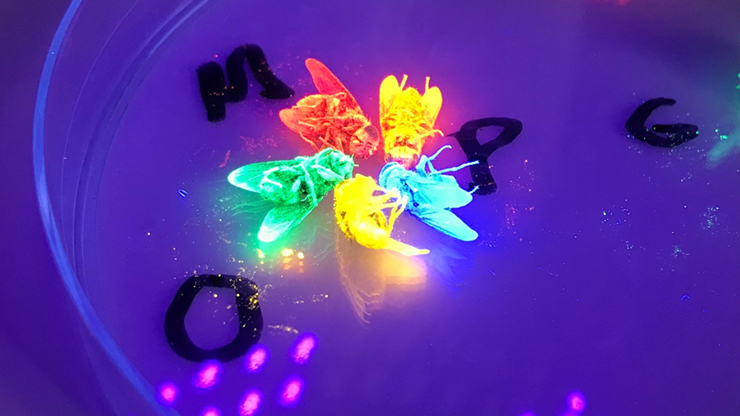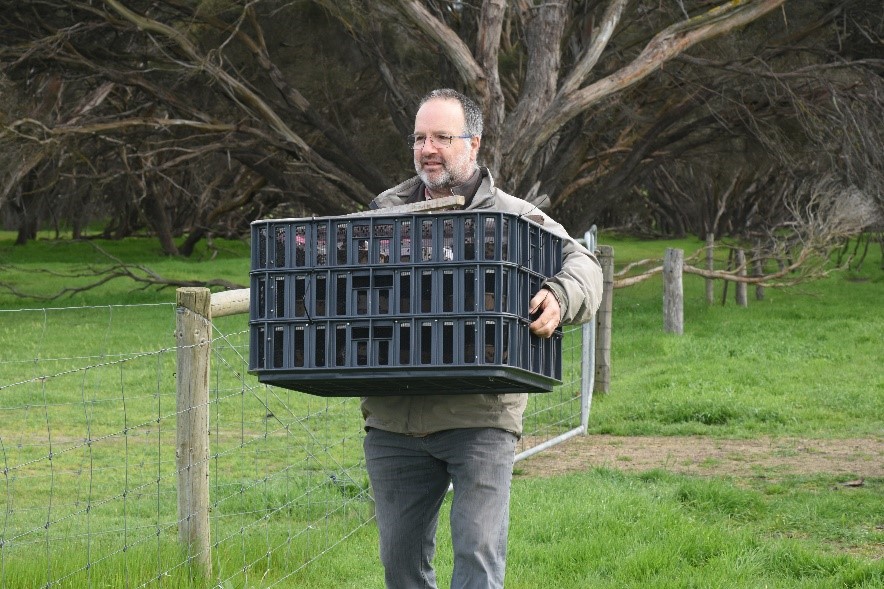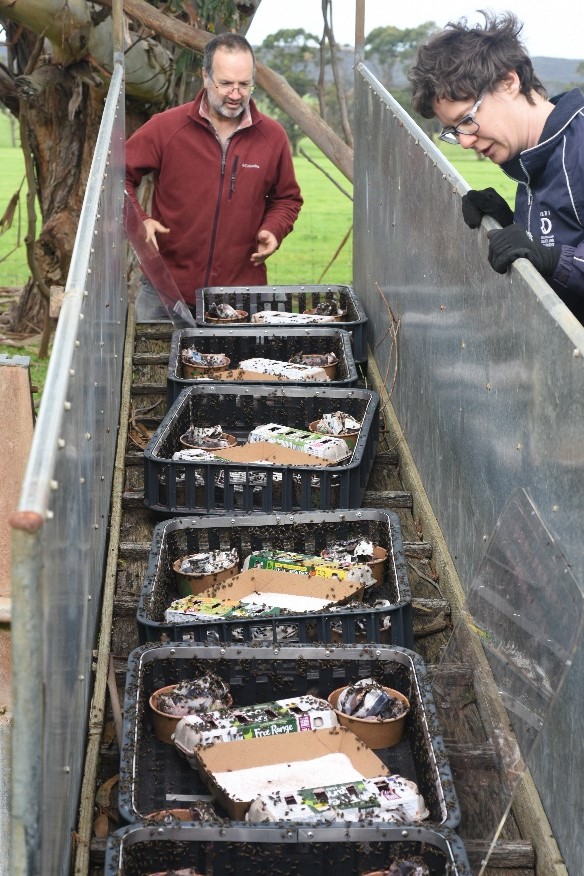 Flies with fluorescent dye (to identify flies from the sterile insect technique project versus wild flies)
Flies with fluorescent dye (to identify flies from the sterile insect technique project versus wild flies)
Sterile blowfly trials offer hope for flystrike control
Researchers in SA are trialling a new sheep blowfly method aimed at reducing flystrike.
Based on Kangaroo Island, the sterile insect technique (SIT) is a chemical-free approach with potential applications on the Australian mainland.
Flystrike, caused by the sheep blowfly Lucilia cuprina, costs the Australian sheep industry an estimated $350 million each year. Current management options – including chemical treatments, mulesing and crutching – can be costly, labour-intensive and face potential issues around insecticide resistance, welfare and negative community perceptions.
SA Research and Development Institute (SARDI) Senior Entomologist Dr Maarten van Helden is leading the SIT research project, which is trialling the approach in a geographically isolated region before evaluating its broader potential.
“In other fly species, SIT has been a very effective control method,” he said.
“We’re testing whether it can be scaled up and economically sustained to manage or even eradicate Lucilia cuprina in areas where reinfestation is minimal.”

SARDI Senior Entomologist Dr Maarten van Helden releasing flies in 2022
How SIT works
The principle behind SIT is to release sterile male blowflies into the environment so they mate with wild females and prevent reproduction. Because female blowflies only mate once, these sterile pairings prevent the next generation of flies and, over time, the population declines.
With initial funding through the Local Economic Recovery program following bushfires on Kangaroo Island in 2020, SARDI and the University of Adelaide established a modular insect-rearing facility on the island. This facility – which is built from shipping containers – can produce 50 million sterile blowfly pupae each week, enough for large-scale aerial release across the 4,400km² island.
Now in its second phase, the project is supported by MLA, Australian Wool Innovation, Animal Health Australia, the South Australian Sheep Industry Fund, the University of Adelaide and SARDI, and will continue scaling up production and release as it works toward the goal of island-wide eradication.
Island conditions
“Kangaroo Island provides an ideal environment to test this technique because of its isolation and relatively stable sheep population – around 500,000 to 600,000 depending on seasonal conditions,” Maarten said.
The team has already trialled pupae-based releases – a different approach to the traditional adult fly releases used in other SIT programs. The pupae are dropped by plane, allowing the flies to emerge in the environment, ready to mate.
“One of the key advantages of this approach is that it’s environmentally friendly,” Maarten said. “It avoids the use of chemicals entirely and has no risk of residues or resistance developing over time.”

SARDI Senior Entomologist Dr Maarten van Helden and Blowfly SIT facility manager Helen Brodie examine flies after an initial experimental release.
If successful, the facility can be relocated for targeted deployment in other high-risk areas. While eradication on the mainland is unlikely, SIT could be used for area-wide management during peak flystrike periods or in regions with higher sheep densities.
“We estimate the cost at around $6–$10/ha/year. If you’ve got more than two sheep per hectare, it becomes economically viable,” Maarten said.
The project will also deliver insights into blowfly ecology, recolonisation rates and the feasibility of different release strategies, key considerations for any proposed future roll out on the Australian mainland.
“We’re building the foundation for SIT to be added to the toolbox of blowfly management options,” he said.
“It’s about providing producers with more effective and welfare-conscious solutions.”



